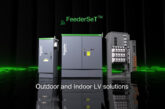
Sean Miller, Electrician Programme Manager at Schneider Electric, explains the crucial role that electrical understanding plays in creating an energy efficient system.
While 2020 has been dominated by COVID-19 headlines, sustainability and energy usage has bubbled beneath the surface with ever increasing ferocity for all electrical professionals.
Power efficiency is now a top concern for all, especially those working in business-critical applications seeking to meet increasing digital demands, manage energy costs, and minimise CO2 emissions.
Within critical systems that support data centres, buildings, industrial factories and healthcare facilities, the growth of digital services, data consumption and connectivity has made power continuity and resilience essential.
Downtime has become a key issue within increasingly complex electrical systems. According to a Centrica report, 39% of businesses today experience unscheduled downtime as a result of an energy-related failure, and one in three lose revenue due to power outages. Additionally, 18% of those businesses said that outages have damaged their brand, with 19% citing that relationships with customers have soured as a consequence.
While the importance of resilience is becoming more widely understood, the means of pre-empting issues remains opaque. Fundamentally, maximising efficiency requires a holistic understanding of all electrical and business functions. However, the details are more complex – the type and design configuration of an uninterruptible power supply (UPS), for example, can deliver significant cost savings. Ensuring power predictability and reliability is the priority for any UPS, yet several options in technology, topology and modularity need to be considered to maximise efficiency.
These are some key considerations that all electricians must be aware of when choosing solutions for their critical projects:
Tools to guide modernisation
Fortunately, there are many online resources and digital tools freely available today to help guide electrical contractors, business owners and operators, which offer the ability to model scenarios to meet specific requirements.
Some, for example, can help to determine energy usage, efficiency gains and long-term lifecycle benefits, while others offer the ability to select and deploy UPS technologies based on uptime and availability requirements, budget, and even upgrades to an existing installed base of UPS assets.
Modern tools can provide data driven insights into different scenarios. They help end-users to identify basic power, cooling and IT requirements in specific environments, offering key guidance.
Electricians and operators will frequently be the decision makers on product upgrades and replacements. To help this process, tools exist to calculate the cost of maintenance and support contracts, replacement schedules and the estimated remaining life of a system compared to the power consumption, longevity and replacement costs of upgrading to newer technologies.
Ease of installation
Today, the electrical industry, like many others, is beginning to experience a widespread skills shortage. Due to the specialist expertise needed for specific applications and environments, many professionals are beginning to move from traditional electrical installation work to data centres and other power-intensive critical infrastructure spaces.
Depending on the type of application a contractor is working on, the complexity of deploying this technology could be significant. Electrical professionals must therefore be expertly trained and able to prioritise safety on-site.
As such, new power products and components need to be easy to work with, easy to install, and safe to service and maintain. The good news is that as new technologies evolve, manufacturers like Schneider Electric can simplify their designs and make products easier to install.
Take the Acti9 Isobar P distribution board, which has split neutral cabling and plug-on RCBO technology to reduce total installation time. Paired with IoT technologies such as PowerTag, which provides data analytics, this can help electrical professionals to overcome many of their energy-related challenges and bridge the skills gap.
Remote monitoring
With outages increasing and resiliency becoming a growing concern, deploying new power protection solutions with the ability to monitor, manage and check the health status of critical infrastructure equipment in real-time has become a fundamental consideration.
IoT technology and advanced control circuitry allow systems to be monitored and managed from any location. Status information is continuously routed to a central management console, providing operators with the visibility needed to schedule proactive maintenance and replace products that are nearing their end of life.
Layered Artificial Intelligence (AI) and machine learning algorithms identify and alert users to issues, enabling them to respond rapidly before problems arise. Solutions such as Acti9 PowerTag enable this level of insight and remote monitoring.
As technologies continue to improve and become more sustainable, sophisticated remote management software increases resilience and uptime, enabling complex power products to be managed with even greater efficiency, lower operating costs and a reduced carbon footprint.
Prioritising connectivity
Fundamentally, the ability to maintain critical equipment and provide a consistent and reliable service relies on complete connectivity. Systems must embrace open infrastructure to enable organisations to compete in the digital world.
Interoperability is more important than ever to allow diverse hardware and software systems to work seamlessly across sectors and verticals. Unifying the software which provides the basis for agnostic applications, analytics and services for seamless integration is a necessity.
Connecting everything, from the shop floor to the top floor, embeds intelligence at every level and supports better decision making through operations. Without complete connectivity bridging all functions and applications, maximum efficiency is impossible.
The challenge and the opportunity we have in front of us for the next 20 years is to transition into a new all electric, all digital world, where we can use connectivity and remote monitoring for improved installations and increased safety. Electricians must make decisions now with this in mind, in order to be prepared for the future.
View the Schneider Electric Global Digitisation report by clicking here










